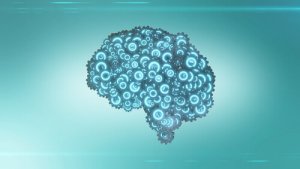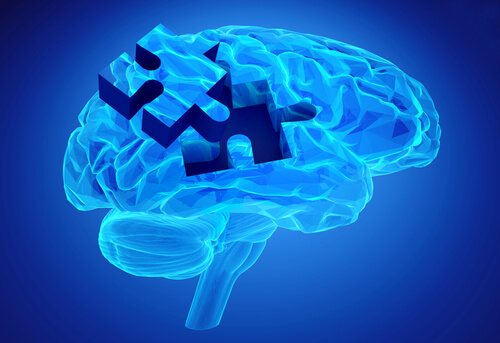Working Memory - The Warehouse That Never Stops


Written and verified by the psychologist Sergio De Dios González
We all use our working memory in all kinds of activities and daily tasks. When we work out the bill in the supermarket and when we take notes. When we try to calculate a percentage or when we have a conversation. These tasks all use our working memory. Because of this, the success of these tasks will all depend on how well our working memory is functioning.
Working memory, also called operational memory, is a type of short-term memory that is responsible for the storage and the temporary handling of information. It is a type of memory that keeps certain information present in our mind, and, at the same time, performs complex cognitive tasks with it. We can call it the operating room of our mind -it holds both the patient and the operating surgeon. Logically, the result will depend on how you carry out the two simultaneous processes.
What are the main characteristics of working memory?
The main characteristics of working memory are:
- It has a limited capacity (between 5 and 9 items).
- It is very active – it handles and transforms information.
- It constantly updates its contents.
- It is closely related to long-term memory. It can work with content stored in this type of memory, and at the same time with content stored in the short-term memory.

The importance of working memory
Have you ever tried to say a phone number aloud, and, when you come to dial it 10 seconds later, you can’t remember it? That is when we come to realize the relevance of working memory in our daily lives. We can also see how important it is to exercise our working memory and keep it “in shape”.
Working memory is fundamental in the decision-making process and for the correct functioning of executive functions. This is especially the case when there is a strong demand for attention and for planning actions. Its involvement in the understanding of oral and written language is due to the fact that it can keep each word active, recognize it, and analyze it semantically. It can also compare it with other words and combine it with information stored in another type of memory or with information that arrives at that moment through our senses .
Working memory is the engine of our knowledge and reasoning. As such, it is essential in mental tasks, such as those related to calculus, purely logical reasoning, and perceptual-motor control. It also relates to very different kinds of learning, such as reading or learning mathematics. A person who has a brain injury that is linked to memory problems, may not be able to define a word or decide if two words have a phonetic rhyme.
Is short-term memory the same as working memory?
Short-term memory allows you to retain a limited amount of information for a short period of time. It is considered a “passive warehouse”, which is limited both in capacity and duration. On the other hand, working memory allows us to carry out conscious cognitive processes that require attention, review, handling, organization, and the establishment of connections with long-term memory.
Despite this apparent conceptual difference, there is currently a debate about whether or not working memory is the same as short-term memory. On the one hand, a large amount of researchers consider that these two “warehouses” are a single temporary storage system in themselves, or that they form one. They allow the brain to work with information to solve or perform complex cognitive tasks.
However, at the opposite extreme, other authors consider that both systems are different and perform different functions. To their mind, short-term memory involves only storage. They view working memory as involving processing, storage, and handling.
How working memory works – the multicomponent model
To try to explain its operation, Baddeley and Hitch proposed a unique model that divided the working memory into 4 subsystems or specialized components:
1. Central Executive: This is in charge of supervising, controlling and coordinating all other systems. It is not involved in storage tasks. It is considered to be a supervision system, which allows the focus of attention to change (selective attention).
2. Phonological loop: This allows us to acquire vocabulary. It is essential in the development of other intellectual abilities. It is divided into two systems: the passive phonological store, which maintains verbal information, and the sub-verbal review, which “refreshes” and maintains that information.
3. Visuo-spatial working memory: This allows us to perceive objects, find a house or play chess. It is also divided into two systems: the visual cache and the inner scribe, which perform the same functions as the components of the phonological loop.
4. Episodic buffer: This allows the connection of the phonological loop information and the visuo-spatial agenda, as well as the representations of the long-term memory.
Neuroanatomical structures involved in the working memory
Working memory is not located in an exclusive part of the brain. It requires the activation of a specific neuron circuit. It is set in motion by the activation of the prefrontal cortex, the area of the brain involved in the planning of complex behaviors, decision-making processes, and in the adaptation of social behavior to various situations.

After its start-up, its operation is based on the interaction between the prefrontal cortex and different areas of the posterior cortex, the temporal lobe, and the occipital.
- The temporal lobe allows the storage and handling of verbal information in the short term (phonological loop activity).
- The occipital lobe processes visual information (visuo-spatial agenda activity).
Our working memory is, in short, an active temporary memory store. Thanks to the working memory and its power we can understand language, read, perform mathematical calculations, learn or reason. Our memory is fascinating indeed.
We all use our working memory in all kinds of activities and daily tasks. When we work out the bill in the supermarket and when we take notes. When we try to calculate a percentage or when we have a conversation. These tasks all use our working memory. Because of this, the success of these tasks will all depend on how well our working memory is functioning.
Working memory, also called operational memory, is a type of short-term memory that is responsible for the storage and the temporary handling of information. It is a type of memory that keeps certain information present in our mind, and, at the same time, performs complex cognitive tasks with it. We can call it the operating room of our mind -it holds both the patient and the operating surgeon. Logically, the result will depend on how you carry out the two simultaneous processes.
What are the main characteristics of working memory?
The main characteristics of working memory are:
- It has a limited capacity (between 5 and 9 items).
- It is very active – it handles and transforms information.
- It constantly updates its contents.
- It is closely related to long-term memory. It can work with content stored in this type of memory, and at the same time with content stored in the short-term memory.

The importance of working memory
Have you ever tried to say a phone number aloud, and, when you come to dial it 10 seconds later, you can’t remember it? That is when we come to realize the relevance of working memory in our daily lives. We can also see how important it is to exercise our working memory and keep it “in shape”.
Working memory is fundamental in the decision-making process and for the correct functioning of executive functions. This is especially the case when there is a strong demand for attention and for planning actions. Its involvement in the understanding of oral and written language is due to the fact that it can keep each word active, recognize it, and analyze it semantically. It can also compare it with other words and combine it with information stored in another type of memory or with information that arrives at that moment through our senses .
Working memory is the engine of our knowledge and reasoning. As such, it is essential in mental tasks, such as those related to calculus, purely logical reasoning, and perceptual-motor control. It also relates to very different kinds of learning, such as reading or learning mathematics. A person who has a brain injury that is linked to memory problems, may not be able to define a word or decide if two words have a phonetic rhyme.
Is short-term memory the same as working memory?
Short-term memory allows you to retain a limited amount of information for a short period of time. It is considered a “passive warehouse”, which is limited both in capacity and duration. On the other hand, working memory allows us to carry out conscious cognitive processes that require attention, review, handling, organization, and the establishment of connections with long-term memory.
Despite this apparent conceptual difference, there is currently a debate about whether or not working memory is the same as short-term memory. On the one hand, a large amount of researchers consider that these two “warehouses” are a single temporary storage system in themselves, or that they form one. They allow the brain to work with information to solve or perform complex cognitive tasks.
However, at the opposite extreme, other authors consider that both systems are different and perform different functions. To their mind, short-term memory involves only storage. They view working memory as involving processing, storage, and handling.
How working memory works – the multicomponent model
To try to explain its operation, Baddeley and Hitch proposed a unique model that divided the working memory into 4 subsystems or specialized components:
1. Central Executive: This is in charge of supervising, controlling and coordinating all other systems. It is not involved in storage tasks. It is considered to be a supervision system, which allows the focus of attention to change (selective attention).
2. Phonological loop: This allows us to acquire vocabulary. It is essential in the development of other intellectual abilities. It is divided into two systems: the passive phonological store, which maintains verbal information, and the sub-verbal review, which “refreshes” and maintains that information.
3. Visuo-spatial working memory: This allows us to perceive objects, find a house or play chess. It is also divided into two systems: the visual cache and the inner scribe, which perform the same functions as the components of the phonological loop.
4. Episodic buffer: This allows the connection of the phonological loop information and the visuo-spatial agenda, as well as the representations of the long-term memory.
Neuroanatomical structures involved in the working memory
Working memory is not located in an exclusive part of the brain. It requires the activation of a specific neuron circuit. It is set in motion by the activation of the prefrontal cortex, the area of the brain involved in the planning of complex behaviors, decision-making processes, and in the adaptation of social behavior to various situations.

After its start-up, its operation is based on the interaction between the prefrontal cortex and different areas of the posterior cortex, the temporal lobe, and the occipital.
- The temporal lobe allows the storage and handling of verbal information in the short term (phonological loop activity).
- The occipital lobe processes visual information (visuo-spatial agenda activity).
Our working memory is, in short, an active temporary memory store. Thanks to the working memory and its power we can understand language, read, perform mathematical calculations, learn or reason. Our memory is fascinating indeed.
This text is provided for informational purposes only and does not replace consultation with a professional. If in doubt, consult your specialist.







